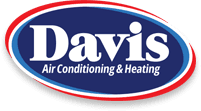Best Air Purifers for Your Home Include Plants
Cleaner Air, More Efficiently
When pollutants are released into the air indoors, they are much more likely to be inhaled than when they are released outside. The air trapped inside your home is breathed in and out every day, and impurities such as smoke, mold spores and chemicals easily pass into your lungs. Keeping your HVAC system clean is not simply a matter of selecting the right air filter and replacing it often. Different air purifiers can help combat different types of pollutants. Use a combination of purifying solutions can be the most effective way to clean the air inside your home.
Types of Indoor Air Pollution
One of the most obvious sources of indoor air pollution is cigarette smoke. However, products that mask the smoke from cigarettes often release their own toxins into the air. Smoke from candles or incense can be just as polluting as smoke from cigarettes. Chemicals from spray air fresheners can collect in the home. Even the emissions from gas stoves have been found to cause breathing problems in some people.
Combining Forces to Improve Indoor Air Quality
As contaminants in the air pass through your heating and cooling system, they can cover the surface of your HVAC system components. Combined with moisture, these contaminants can become a breeding ground for unhealthy organisms to grow and seep into your air. A thorough duct cleaning can remove much of this grime and kill live contaminants, such as mold.
Indoor air purifiers can also help to improve indoor air quality. Using a HEPA filter instead of your regular air conditioner filter can help clean the air as your HVAC system proceeds through its cycle. Houseplants can also work as indoor air purifiers.
Plants as Purifiers
Using a plant as an air purifier can help you save energy, because you do not need to rely on another piece of electronic equipment to do the work for you. Plants take in toxins through their leaves, filtering them and releasing oxygen. Because the plants are absorbing additional pollutants, fewer chemicals are left in the air you breathe. Rooms that have a higher potential of contributing to indoor air pollution, like the kitchen or an office that houses a great deal of electronic equipment, are ideal locations for plant purifiers.
Best Plants for Cleaning the Air
Many types of palms and ferns are effective at removing toxins from the air. The reed palm and areca palm bring an exotic touch to your home as they clean the air. The peace lily and English ivy are more traditional options. For homes without much natural sunlight, snake plants grow with little upkeep.
You May Also Like

How Mechanical Ventilation Boosts Indoor Air Quality
The air inside your Sugarland, TX, home changes drastically during the holiday season. As temperatures dip and windows stay sealed tight, indoor… Continue Reading How Mechanical Ventilation Boosts Indoor Air Quality…

Why Are Heat Pumps With Greenspeed Intelligence So Efficient?
As Angleton, TX, homeowners crank up their heating systems for cooler weather, energy bills threaten to climb faster than Gulf Coast humidity… Continue Reading Why Are Heat Pumps With Greenspeed Intelligence So Efficient?…

Should I Replace My Old Furnace With a Geothermal Heat Pump?
Winter is coming. Many Sugarland, TX, homeowners are facing the inevitable question: Is it time to replace that aging gas furnace? If… Continue Reading Should I Replace My Old Furnace With a Geothermal Heat Pump?…
